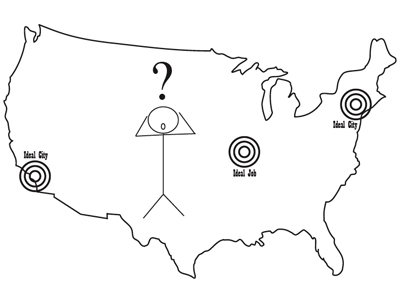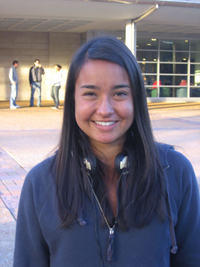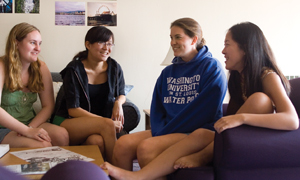 Scott Bressler
Scott BresslerThis just in: The Loop continues East of Skinker! Yep-there are shops, restaurants, galleries and more that stretch far beyond the Loop landmarks on the western end. It’s true that East Delmar can be “sketchy,” especially at night. But it also boasts some quirky, off-the-beaten-path venues that are worth a look. If you’ve never been past the Pageant, venture a little further and check out this list of intriguing places.
SHOPPING:
Melrose to Manhattan
6161 Delmar Blvd., Suite 101
314.863.5959
http://www.melrosetomanhattan.com/
If you want to take it slow, try this little shop next to the Pageant-still in familiar territory! Melrose to Manhattan offers brand-name jeans, trendy tops and a variety of bags to complete the outfit.
6172 Delmar Blvd.
314.773.2234
http://www.fifis.biz/
This punk-rock clothier gets passed up far too often in favor of main-drag shops like Rag-O-Rama. But you’ll be glad you walked that extra block; Fifi’s offers a good selection of reasonably-priced clothes in a variety of styles, as well as punky accessories.
Alice’s Vintage Clothing, Jewelry, & Necessaries
6178 Delmar Blvd.
314.361.4006
A fun vintage shop with a range of styles that will all fit into the college budget, this place is definitely worth the extra walk. And when they say vintage, they mean vintage-not only funky leftovers from the ’70s, but laces, hats and gloves from as far back as the early 1900s.
Knitty Couture
6148 Delmar Blvd.
314.727.6500
http://www.knittycouture.com/
If you’re a knitter, this is the place to be. It offers unique yarns, books and even classes to perfect your skills and teach you the trickiest stitches. (Say THAT 10 times fast.)
Not Just A Book Store
5892 Delmar Blvd.
314.361.9955
Well, it’s certainly NOT just a bookstore. You’ll probably spend more time browsing the herbal teas than the books at this unusual East Loop spot. Look out for eclectic speakers and evening events every few weeks.
RESTAURANTS:
549 Rosedale Ave.
314.726.7996
Just off Delmar at the Rosedale intersection, this tiny place is way too easy to miss-it’s unassuming front and small sign don’t do it justice. Expect fairly greasy but definitely delicious Ethiopian cuisine, with the classic spongy bread and lamb incorporated into many of the meals. Those who are serious about the experience will toss pride aside and go Ethiopian style-no utensils, just your hands and a few pieces of the spongy bread to pick up each bite.
Pi
6144 Delmar Blvd.
314.727.6633
http://www.restaurantpi.com/
Pizza, pizza, pizza! From deep dish to thin crust, Pi does it all. You’ll find appetizers and salads ranging from $4 to $11 and whole pizzas in the $18 range. Pi recently opened on 3/14 of this year-please let yourself chuckle, at least a little.
GALLERIES:
TNT Designs
6163 Delmar Blvd.
314.863.8860
If you couldn’t get enough of the cool glass stuff at Third Degree, stop by TNT designs. They do a little bit of everything-unusual gifts, glass art, jewelry and more. It’s right near the Pageant, so it’s also not too far for those who don’t have a car.
Diversity Gallery
6150 Delmar Blvd.
314.721.3361
Another place to find a little bit of everything. This venue is a cosmetics shop, a spa shop, an art gallery, a boutique and a hair salon all wrapped into one. Hop next door for a snack or some coffee at the cute Culture Café.
Third Degree Glass Factory
5200 Delmar Blvd.
314.367.4527
This one is a must-see. Every third Friday of the month, Third Degree offers free glass-blowing demonstrations from 6 to 10 p.m. It’s always crowded, attracting couples, groups and families alike. Grab a tasty treat at the bar and rock out to a live band while observing practiced artisans transform lumps of melted glass into perfectly crafted plates. It makes for a truly complete cultural experience. After the festivities, check out the gallery, where glassware and artwork are also on sale all night. Third Degree is a good place for a date, but make sure to bring a car; it’s a little too far for a walk, and the area is not terrifically safe after dark. When they’re not having an open house, Third Degree offers classes in bead-making and glass blowing, some of which you can sign up for through the University.
The Gallery at the Regional Arts Commission
6128 Delmar Blvd.
314.863.5811
http://www.art-stl.com/Gallery.cfm
This gallery is all about local artists. Meander in for a break from shopping and take a look at what St. Louis has to offer.
 David Hartstein and Dennis Sweeney
David Hartstein and Dennis Sweeney


 Scott Bressler
Scott Bressler Scott Bressler
Scott Bressler Scott Bressler
Scott Bressler Scott Bressler
Scott Bressler